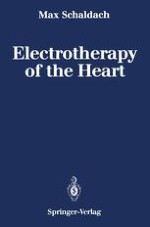1992 | OriginalPaper | Buchkapitel
Materials in Pacemaker Technology
verfasst von : Prof. Dr.-Ing. Max Schaldach
Erschienen in: Electrotherapy of the Heart
Verlag: Springer Berlin Heidelberg
Enthalten in: Professional Book Archive
Aktivieren Sie unsere intelligente Suche, um passende Fachinhalte oder Patente zu finden.
Wählen Sie Textabschnitte aus um mit Künstlicher Intelligenz passenden Patente zu finden. powered by
Markieren Sie Textabschnitte, um KI-gestützt weitere passende Inhalte zu finden. powered by
In the present state of the art, the usefulness of the implantable pacemaker is defined, not only by design constraints in achieving a shape appropriate to the physiological and biomedical requirements of the desired function, but also by the properties of the materials of which the device are made. The use of alloplastic materials in replacement surgery has a long history, and has mainly involved implants in the skeletomuscular system [151–153]. The implantation of artificial parts in the cardiovascular system have only recently been developed [154–157]. The major role played by implantable devices in modern medicine can be illustrated most simply by some statistics. Every year more than 1,500,000 people worldwide are provided with vascular prostheses; artificial heart valves are implanted in 100,000 patients, and about 220,000 receive an implantable cardiac pacemaker [158]. In addition to the electronic requirements discussed previously, the biocompatibility of the implantable pacemaker is of importance in the long-term success of arrhythmia treatment.
